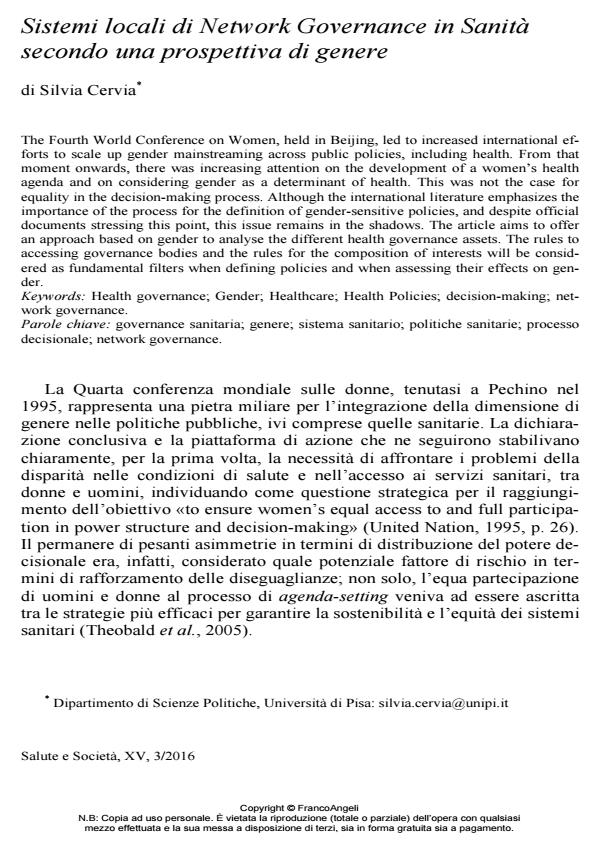Sistemi locali di Network Governance in Sanità secondo una prospettiva di genere
Titolo Rivista SALUTE E SOCIETÀ
Autori/Curatori Silvia Cervia
Anno di pubblicazione 2016 Fascicolo 2016/3
Lingua Italiano Numero pagine 18 P. 43-60 Dimensione file 75 KB
DOI 10.3280/SES2016-003004
Il DOI è il codice a barre della proprietà intellettuale: per saperne di più
clicca qui
Qui sotto puoi vedere in anteprima la prima pagina di questo articolo.
Se questo articolo ti interessa, lo puoi acquistare (e scaricare in formato pdf) seguendo le facili indicazioni per acquistare il download credit. Acquista Download Credits per scaricare questo Articolo in formato PDF

FrancoAngeli è membro della Publishers International Linking Association, Inc (PILA)associazione indipendente e non profit per facilitare (attraverso i servizi tecnologici implementati da CrossRef.org) l’accesso degli studiosi ai contenuti digitali nelle pubblicazioni professionali e scientifiche
The Fourth World Conference on Women, held in Beijing, led to increased international efforts to scale up gender mainstreaming across public policies, including health. From that moment onwards, there was increasing attention on the development of a women’s health agenda and on considering gender as a determinant of health. This was not the case for equality in the decision-making process. Although the international literature emphasizes the importance of the process for the definition of gender-sensitive policies, and despite official documents stressing this point, this issue remains in the shadows. The article aims to offer an approach based on gender to analyse the different health governance assets. The rules to accessing governance bodies and the rules for the composition of interests will be considered as fundamental filters when defining policies and when assessing their effects on gender.
Parole chiave:Governance sanitaria; genere; sistema sanitario; politiche sanitarie; processo decisionale; network governance
Silvia Cervia, Sistemi locali di Network Governance in Sanità secondo una prospettiva di genere in "SALUTE E SOCIETÀ" 3/2016, pp 43-60, DOI: 10.3280/SES2016-003004